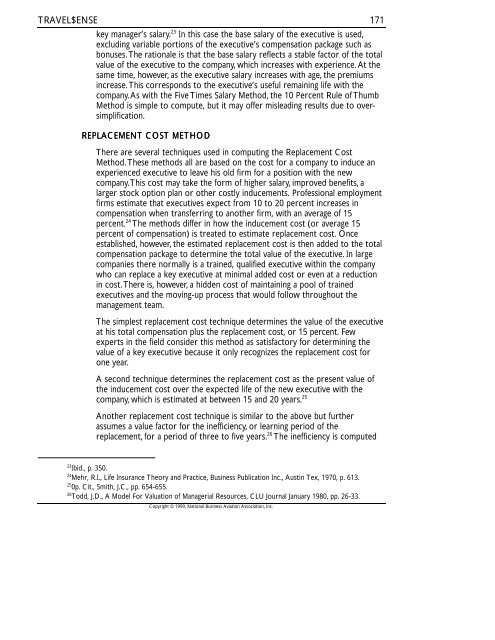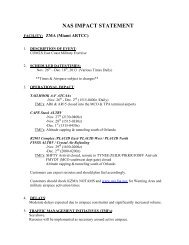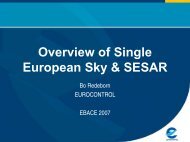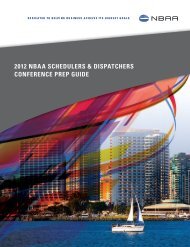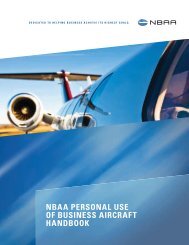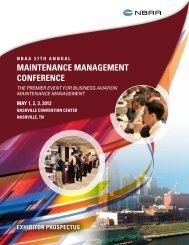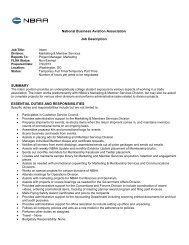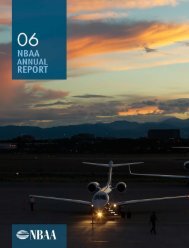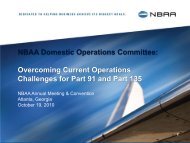Travel$ense User's Guide (PDF, 139 MB) - NBAA
Travel$ense User's Guide (PDF, 139 MB) - NBAA
Travel$ense User's Guide (PDF, 139 MB) - NBAA
- No tags were found...
Create successful ePaper yourself
Turn your PDF publications into a flip-book with our unique Google optimized e-Paper software.
TRAVEL$ENSEkey manager’s salary. 23 In this case the base salary of the executive is used,excluding variable portions of the executive’s compensation package such asbonuses. The rationale is that the base salary reflects a stable factor of the totalvalue of the executive to the company, which increases with experience. At thesame time, however, as the executive salary increases with age, the premiumsincrease. This corresponds to the executive’s useful remaining life with thecompany. As with the Five Times Salary Method, the 10 Percent Rule of ThumbMethod is simple to compute, but it may offer misleading results due to oversimplification.REPLACEMENT COST METHODThere are several techniques used in computing the Replacement CostMethod. These methods all are based on the cost for a company to induce anexperienced executive to leave his old firm for a position with the newcompany. This cost may take the form of higher salary, improved benefits, alarger stock option plan or other costly inducements. Professional employmentfirms estimate that executives expect from 10 to 20 percent increases incompensation when transferring to another firm, with an average of 15percent. 24 The methods differ in how the inducement cost (or average 15percent of compensation) is treated to estimate replacement cost. Onceestablished, however, the estimated replacement cost is then added to the totalcompensation package to determine the total value of the executive. In largecompanies there normally is a trained, qualified executive within the companywho can replace a key executive at minimal added cost or even at a reductionin cost. There is, however, a hidden cost of maintaining a pool of trainedexecutives and the moving-up process that would follow throughout themanagement team.The simplest replacement cost technique determines the value of the executiveat his total compensation plus the replacement cost, or 15 percent. Fewexperts in the field consider this method as satisfactory for determining thevalue of a key executive because it only recognizes the replacement cost forone year.A second technique determines the replacement cost as the present value ofthe inducement cost over the expected life of the new executive with thecompany, which is estimated at between 15 and 20 years. 25Another replacement cost technique is similar to the above but furtherassumes a value factor for the inefficiency, or learning period of thereplacement, for a period of three to five years. 26 The inefficiency is computed17123 Ibid., p. 350.24 Mehr, R.I., Life Insurance Theory and Practice, Business Publication Inc., Austin Tex, 1970, p. 613.25 0p. Cit., Smith, J.C., pp. 654-655.26 Todd, J.D., A Model For Valuation of Managerial Resources, CLU Journal January 1980, pp. 26-33.Copyright © 1999, National Business Aviation Association, Inc.


